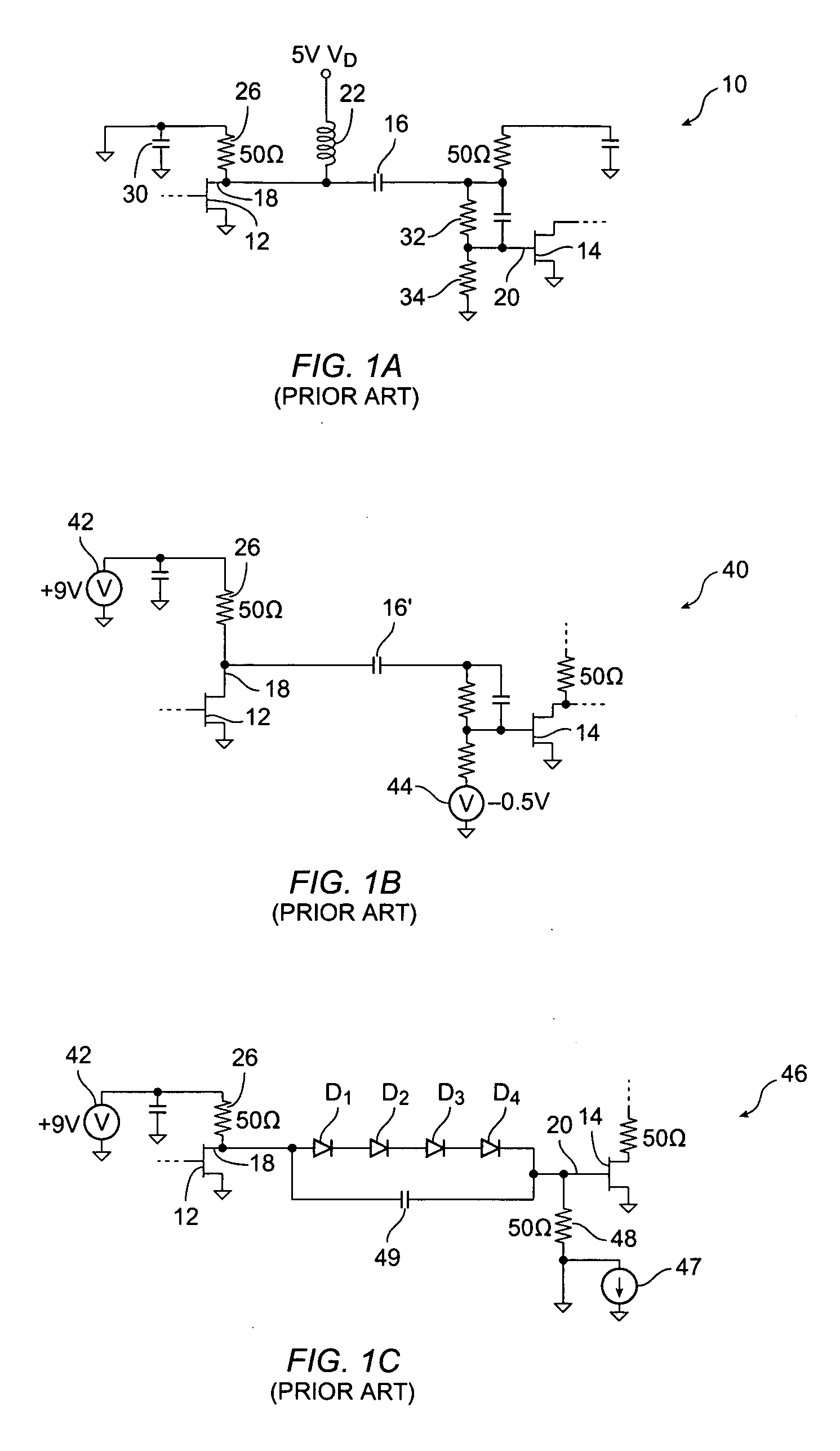DC-coupled multi-stage amplifier using all-pass resistive/capacitive network for level shifting
a level shifting and amplifier technology, applied in the field of high-frequency amplifiers, can solve the problems of high cost of broadband resonance-free inductors, difficult cascading amplifier stages, and incompatibility of bias point (4v) of drain of first amplifier stage with bias point (0.3v) of second amplifier stag
- Summary
- Abstract
- Description
- Claims
- Application Information
AI Technical Summary
Benefits of technology
Problems solved by technology
Method used
Image
Examples
Embodiment Construction
I. Introduction
[0028]Cascaded amplifier stages are DC-coupled in a multi-stage amplifier. Bias current to a first amplifier stage is provided through both the output termination resistor of the first amplifier stage and the input termination resistor of the following amplifier stage. Thus, in a 50-ohm system, drain current for the first amplifier stage is provided through 25 ohms, which is the parallel combination of a 50 ohm output termination of the first amplifier stage and the 50 ohm input termination of the following amplifier stage. This results in lower power dissipation than providing bias current through only the output termination resistor. Resistors and a capacitor integrated on the amplifier chip provide a level-shifting network to bias a gate of the following amplifier stage and to couple the output of the first amplifier stage to the gate of the following amplifier stage from DC to several GHz.
II. Exemplary Multi-Stage Amplifier
[0029]FIG. 2 is a simplified circuit diag...
PUM
 Login to View More
Login to View More Abstract
Description
Claims
Application Information
 Login to View More
Login to View More - R&D
- Intellectual Property
- Life Sciences
- Materials
- Tech Scout
- Unparalleled Data Quality
- Higher Quality Content
- 60% Fewer Hallucinations
Browse by: Latest US Patents, China's latest patents, Technical Efficacy Thesaurus, Application Domain, Technology Topic, Popular Technical Reports.
© 2025 PatSnap. All rights reserved.Legal|Privacy policy|Modern Slavery Act Transparency Statement|Sitemap|About US| Contact US: help@patsnap.com



